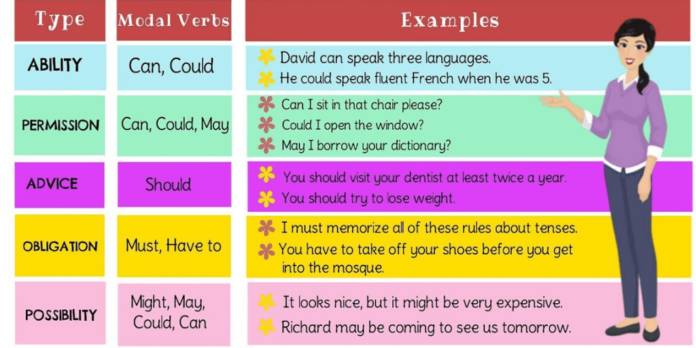
Effective Strategies for Teaching Modal Verbs to Students
Modal verbs are an essential component of the English language, as they help us express possibility, necessity, ability, and other such concepts. However, teaching modal verbs to students can sometimes be a challenging task for educators. To make the learning process more engaging and effective, here are some strategies to consider.
1. Introduce with Context: Start by providing students with real-life examples of how modal verbs are used in everyday conversations. Show them how modal verbs help express ideas like obligation, advice, and ability. Engage students in discussions that involve using modal verbs in realistic situations, such as making suggestions or giving instructions.
2. Visual Aids: Incorporate visual aids, such as charts or graphics, to help students understand the meanings and functions of different modal verbs. Create a colorful poster that displays the modal verbs along with their various uses. This visual representation can serve as a quick reference guide for students during their learning process.
3. Grammar Games: Engage students in fun and interactive grammar games to reinforce their understanding of modal verbs. Divide the class into groups and play games like “Modal Verb Charades” or “Modal Verb Bingo.” These games help students practice using modal verbs in a relaxed and enjoyable atmosphere.
4. Real-world Examples: Provide students with real-world examples of modal verbs in use. This could be done through reading newspapers, magazine articles, or even excerpts from books. By seeing modal verbs being used in authentic contexts, students can better grasp their meaning and learn to use them appropriately.
5. Role-play Activities: Encourage students to participate in role-play activities that involve using modal verbs. Divide the class into pairs or small groups and assign them different scenarios where they have to use modal verbs to communicate. This activity not only improves their understanding of modal verbs but also enhances their speaking skills.
6. Error Correction: Regularly review and correct students’ written work, focusing specifically on their usage of modal verbs. Provide feedback by highlighting any errors and explaining the correct usage. By addressing mistakes and providing explanations, students will have a better understanding of how to use modal verbs accurately.
7. Guided Practice: Create guided practice exercises that gradually increase in difficulty. Begin with simple exercises that focus on identifying the correct modal verb for a given context, and then progress to more complex activities that require students to construct their own sentences using modal verbs. This guided practice allows students to build their confidence and competence gradually.
8. Use Technology: Incorporate technology tools, such as online quizzes and interactive websites, to make learning modal verbs more engaging. Many online resources offer interactive exercises and activities that allow students to practice identifying and using modal verbs in a playful and immersive way.
9. Peer-to-Peer Interaction: Encourage students to work together and help each other in understanding and using modal verbs appropriately. Peer-to-peer interaction can include group discussions, collaborative writing exercises, or peer editing sessions where students review each other’s work for modal verb usage.
10. Frequent Revision: Incorporate regular revision sessions throughout the learning process. Review previously taught modal verbs and their uses to ensure that students retain the information and continue building upon it. This revision can be done through quick quizzes, flashcards, or even short grammar worksheets.
In conclusion, teaching modal verbs to students can be an engaging and effective process by using strategies that involve context, visual aids, games, and real-world examples. Encouraging peer-to-peer interaction and providing opportunities for practice and error correction are also crucial elements of a successful teaching approach. By applying these strategies, educators can help students grasp the usage and importance of modal verbs in the English language, enhancing their overall language proficiency.


















